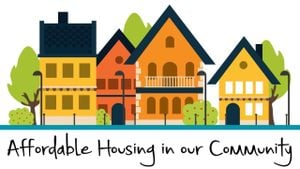With the presidential election looming, the housing market is on edge as mortgage rates continue to rise, impacting affordability for potential homebuyers. Mortgage rates have now climbed for six consecutive weeks, reaching 6.79% for the average 30-year fixed-rate mortgage, according to Freddie Mac. This upward trend reflects not just market dynamics but also broader economic policies proposed by the newly elected leaders.
The correlation between mortgage rates and the 10-year Treasury yields is significant, with rising yields indicating higher borrowing costs for homebuyers. Following former President Donald Trump’s electoral victory, the bond yields surged, reflecting investor sentiments surrounding potential inflationary policies. Economists point to Trump's proposals involving tax cuts and tariffs, which could stimulate the economy but also risk increasing inflation and, by extension, mortgage rates.
Despite hopes for lower rates stimulating home ownership, analysts predict higher mortgage rates persisting throughout next year. Lisa Sturtevant, chief economist at Bright MLS, cautions buyers to remain alert, stating, "Rates will probably stay a little bit more elevated than we might have expected." Such volatility threatens to prolong challenges for first-time homebuyers, who have already seen their share of home purchases plummet to historic lows.
Adding to the affordability crisis is the fact the current rates severely limit purchasing power. Higher monthly payments can lead to potential homeowners delaying their purchases, losing out on building equity. According to the National Association of Realtors, first-time buyers represented only 24% of all home purchases over the past year, matching the lowest level recorded since 1981.
The implication of elevated mortgage rates becomes even graver when considering the potential for economic polarity. Current homeowners, many of whom possess loans at lower rates, are less incentivized to sell. This stagnation could lead to fewer homes on the market, thereby exacerbated already tight supply conditions. Some homeowners opt to stay put instead of facing the harsh comparison of mortgage rates available today versus what they already secured.
The direct link between government policy and mortgage rates is hard to miss. Particularly concerning are forecasts from the Committee for a Responsible Federal Budget, which estimates rising federal budget deficits tied to Trump's agenda could reach $7.75 trillion over the next decade. Such anticipated increases could prompt the government to issue more bonds, likely resulting in higher yields and, correspondingly, higher mortgage rates.
Inflation remains another factor on everyone’s mind. Since the Federal Reserve does not directly set mortgage rates, its decisions significantly influence shielding the economy from inflation spikes. Currently, inflation has seen ups and downs; remarkable highs peaked at 9.1% last year have fallen to near 2.6%. But if economic policies ignite another inflationary wave, it could halt or reverse the easing trend on interest rates.
The market's future remains difficult to predict due to the multitude of factors swirling around. Prior to the election, analysts forecasted mortgage rates dropping below 6% by year's end; now, most anticipate they will remain stubbornly above this threshold.
Beyond the reaction to election outcomes, there’s also been discussion about whether adjusting the Federal Reserve's inflation target from 2% might provide relief for homebuyers. Proponents argue maintaining a slightly higher target could potentially lead to wage increases, assisting individuals striving for home ownership. Connel Fullenkamp, economics professor at Duke University, suggests rising wages combined with inflation might lead to discomfort among consumers and possible price stability issues.
But with both rising costs and V-shaped recoveries spurred by tax breaks, the overarching concern is homeowners wrestling with high prices against stagnant wage growth. The upward pressure felt might instigate demands for raises, inadvertently driving more inflation.
Throughout significant fluctuations, it's evident the state of housing affordability is deeply entangled with governmental fiscal policy and economic strategies. So, for would-be homeowners, the best advice may be simply to stay updated on market forecasts, remain flexible, and, quite frankly, practice patience.
While many eyes turn to policy adjustments and potential interventions from the Federal Reserve, the truth is clear: the intersection of mortgage rates, home prices, and Americans' aspirations to own homes is becoming more precarious than ever. The road to homeownership is rocky; what remains to be seen is how policymakers will navigate these economic currents and how pragmatic solutions can be shaped to cushion the blows of higher borrowing costs on all levels of buyers.



